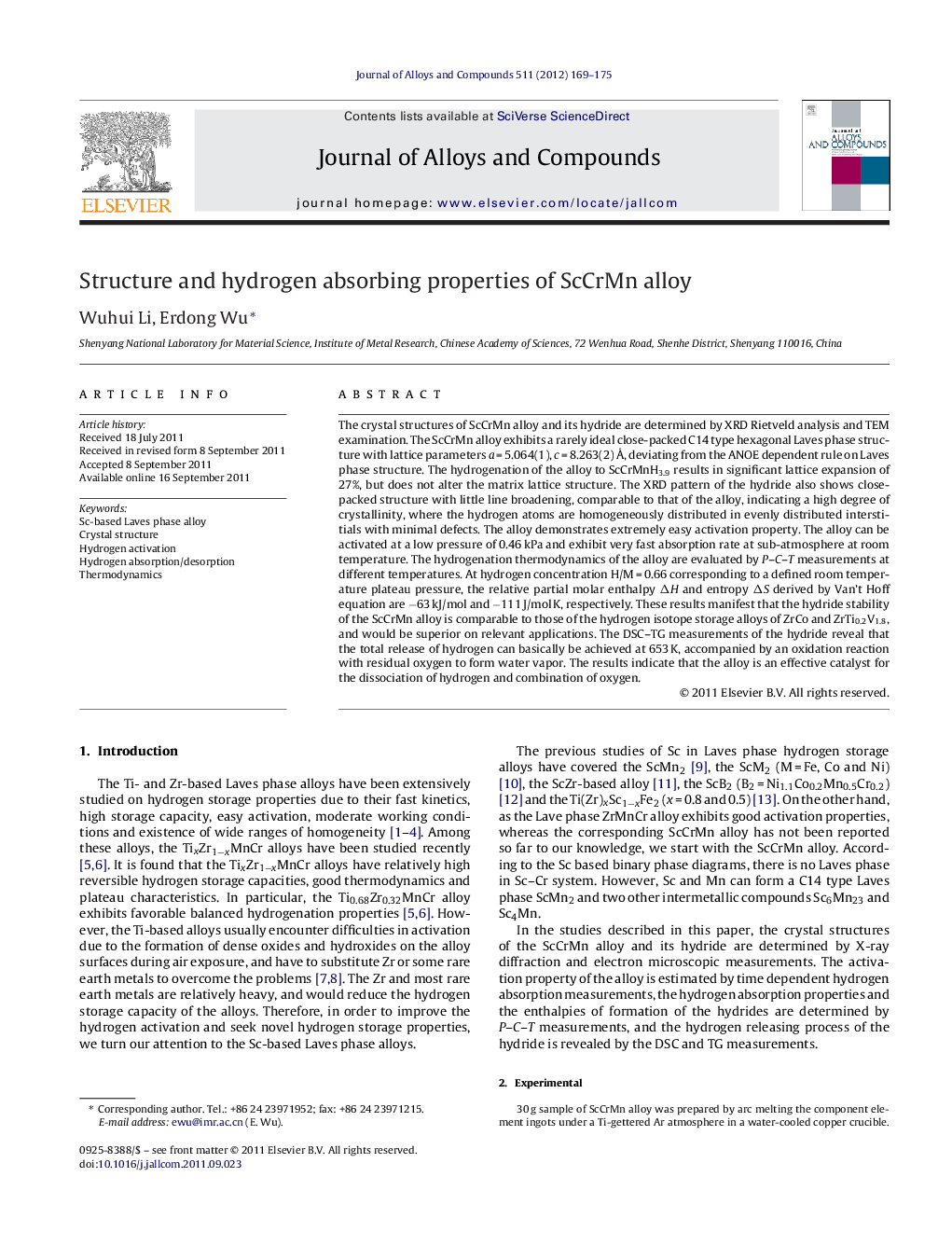| کد مقاله | کد نشریه | سال انتشار | مقاله انگلیسی | نسخه تمام متن |
|---|---|---|---|---|
| 1616629 | 1005665 | 2012 | 7 صفحه PDF | دانلود رایگان |

The crystal structures of ScCrMn alloy and its hydride are determined by XRD Rietveld analysis and TEM examination. The ScCrMn alloy exhibits a rarely ideal close-packed C14 type hexagonal Laves phase structure with lattice parameters a = 5.064(1), c = 8.263(2) Å, deviating from the ANOE dependent rule on Laves phase structure. The hydrogenation of the alloy to ScCrMnH3.9 results in significant lattice expansion of 27%, but does not alter the matrix lattice structure. The XRD pattern of the hydride also shows close-packed structure with little line broadening, comparable to that of the alloy, indicating a high degree of crystallinity, where the hydrogen atoms are homogeneously distributed in evenly distributed interstitials with minimal defects. The alloy demonstrates extremely easy activation property. The alloy can be activated at a low pressure of 0.46 kPa and exhibit very fast absorption rate at sub-atmosphere at room temperature. The hydrogenation thermodynamics of the alloy are evaluated by P–C–T measurements at different temperatures. At hydrogen concentration H/M = 0.66 corresponding to a defined room temperature plateau pressure, the relative partial molar enthalpy ΔH and entropy ΔS derived by Van’t Hoff equation are −63 kJ/mol and −111 J/mol K, respectively. These results manifest that the hydride stability of the ScCrMn alloy is comparable to those of the hydrogen isotope storage alloys of ZrCo and ZrTi0.2V1.8, and would be superior on relevant applications. The DSC–TG measurements of the hydride reveal that the total release of hydrogen can basically be achieved at 653 K, accompanied by an oxidation reaction with residual oxygen to form water vapor. The results indicate that the alloy is an effective catalyst for the dissociation of hydrogen and combination of oxygen.
► ScCrMn alloy and its hydride crystallize in ideal close-packed C14 structure.
► ScMnCr alloy can react initially with hydrogen at 0.46 kPa and 298 K.
► Hydride of ScCrMn alloy exhibits very low hydrogen equilibrium pressure.
► Total release of hydrogen in hydride ScCrMnH3.9 can basically be achieved at 653 K.
Journal: Journal of Alloys and Compounds - Volume 511, Issue 1, 15 January 2012, Pages 169–175